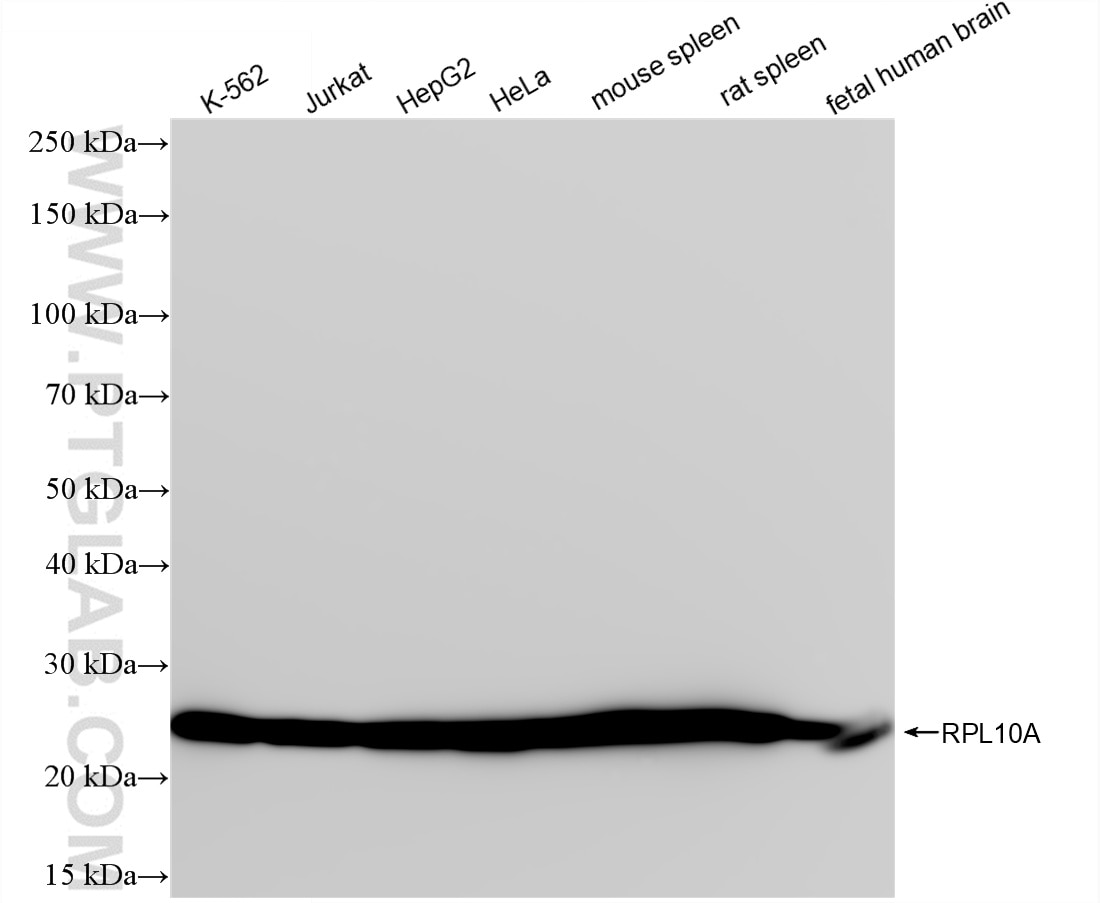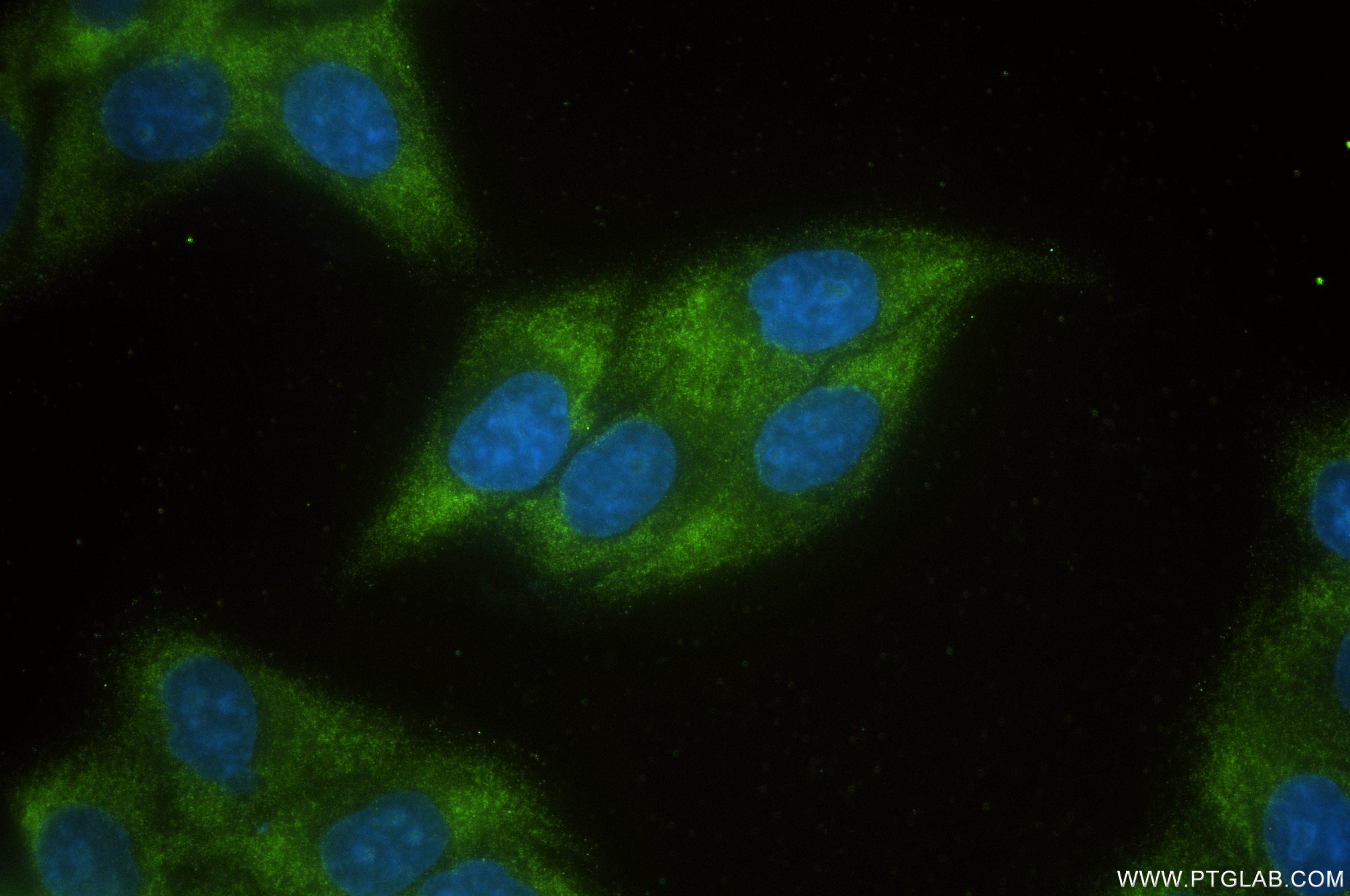Tested Applications
| Positive WB detected in | K-562 cells, Jurkat cells, HepG2 cells, HeLa cells, mouse spleen tissue, rat spleen tissue, fetal human brain tissue |
| Positive IF/ICC detected in | HepG2 cells |
Recommended dilution
| Application | Dilution |
|---|---|
| Western Blot (WB) | WB : 1:5000-1:50000 |
| Immunofluorescence (IF)/ICC | IF/ICC : 1:200-1:800 |
| It is recommended that this reagent should be titrated in each testing system to obtain optimal results. | |
| Sample-dependent, Check data in validation data gallery. | |
Product Information
85685-1-RR targets RPL10A in WB, IF/ICC, ELISA applications and shows reactivity with human, mouse, rat samples.
| Tested Reactivity | human, mouse, rat |
| Host / Isotype | Rabbit / IgG |
| Class | Recombinant |
| Type | Antibody |
| Immunogen | RPL10A fusion protein Ag10009 Predict reactive species |
| Full Name | ribosomal protein L10a |
| Calculated Molecular Weight | 25 kDa |
| Observed Molecular Weight | 25 kDa |
| GenBank Accession Number | BC006791 |
| Gene Symbol | RPL10A |
| Gene ID (NCBI) | 4736 |
| Conjugate | Unconjugated |
| Form | Liquid |
| Purification Method | Protein A purification |
| UNIPROT ID | P62906 |
| Storage Buffer | PBS with 0.02% sodium azide and 50% glycerol, pH 7.3. |
| Storage Conditions | Store at -20°C. Stable for one year after shipment. Aliquoting is unnecessary for -20oC storage. 20ul sizes contain 0.1% BSA. |
Background Information
RPL10A (Ribosomal Protein L10a) is a component of the 60S subunit of the ribosome and belongs to the L1P family of ribosomal proteins. It is located in the cytoplasm. RPL10A is ubiquitously expressed in various tissues, it plays a crucial role in ribosome biogenesis and protein synthesis. In addition to its role in protein synthesis, RPL10A has been implicated in cell proliferation, embryogenesis, and organogenesis. PMID: 29953919
Protocols
| Product Specific Protocols | |
|---|---|
| WB protocol for RPL10A antibody 85685-1-RR | Download protocol |
| IF protocol for RPL10A antibody 85685-1-RR | Download protocol |
| Standard Protocols | |
|---|---|
| Click here to view our Standard Protocols |





